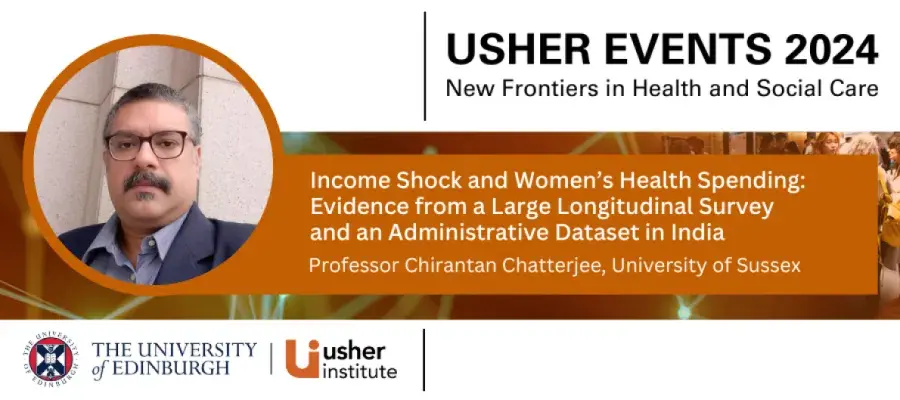Professor Chatterjee explored the little-studied role of gender-based tastes and preferences in the relationship between income and healthcare demand.
Drawing on substantial evidence that the gender identity of the income recipient can significantly influence household resource allocation, Professor Chatterjee posits that an increase in women’s income may lead to unexpected changes in healthcare demand.
Using data from a high-frequency, nationally representative household survey in India, he examines the impact of variations in women’s take-home salaries, resulting from changes in mandated contributions to the employees’ provident fund, on healthcare spending. His findings indicate that an increase in women’s take-home pay correlates with a decrease in overall healthcare expenses, including consultations and medications. This trend remains even after accounting for health status and focusing on hospital visits for treatment.
Supplementing this analysis with administrative data from a leading chain of eye hospitals in India, Professor Chatterjee's research suggests that women's healthcare preferences may be influenced by social and household norms. These findings challenge the assumption that higher income always leads to increased healthcare spending among women, especially in developing countries.

Chirantan Chatterjee is a Professor of Development Economics, Innovation and Global Health at University of Sussex. He is also a Visiting Fellow at the Hoover Institution, and was previously the 2018–19 Edward Teller National Fellow under Hoover’s W. Glenn Campbell and Rita Ricardo-Campbell National Fellowship program. Chatterjee is a Fellow of the Royal Society of Arts, and a Visiting Professor in MIPLC, Max Planck Institute of Innovation and Competition in Munich, Germany.
Chatterjee’s research interests are in economics of innovation, applied microeconomics, pharmaceutical economics, and global health. He has been published in top peer-reviewed journals, including Management Science, RAND Journal of Economics, Journal of Development Economics, Journal of Health Economics, Research Policy, Production and Operations Management, Journal of Business Ethics, Social Science and Medicine, Health Economics, Health Policy and Planning, among others. He is the coauthor of Flattening the Curve: COVID-19 & Grand Challenges for Global Health, Innovation, and Economy (2023).
Chatterjee was also co-PI of the Wellcome Trust India Alliance Funded LV Prasad Eye Institute initiative. He has previously held the ICICI Bank Chair in Strategic Management at the Indian Institute of Management (IIM) Ahmedabad and has also been a former full-time faculty member at IIM Bangalore and the Indian School of Business. In the past he has consulted for the United Nations and the World Bank on COVID-19 and universal health coverage. Chatterjee holds a PhD and MPhil in public policy and management from Carnegie Mellon University and has worked prior to his doctoral education as a business journalist for the Economic Times, India’s leading business daily, after earning his BTech (civil engineering) from the Indian Institute of Technology Roorkee and his MBA from the Indian Institute of Management Calcutta.
Further information
Wellcome Trust India Alliance Funded LV Prasad Eye Institute


